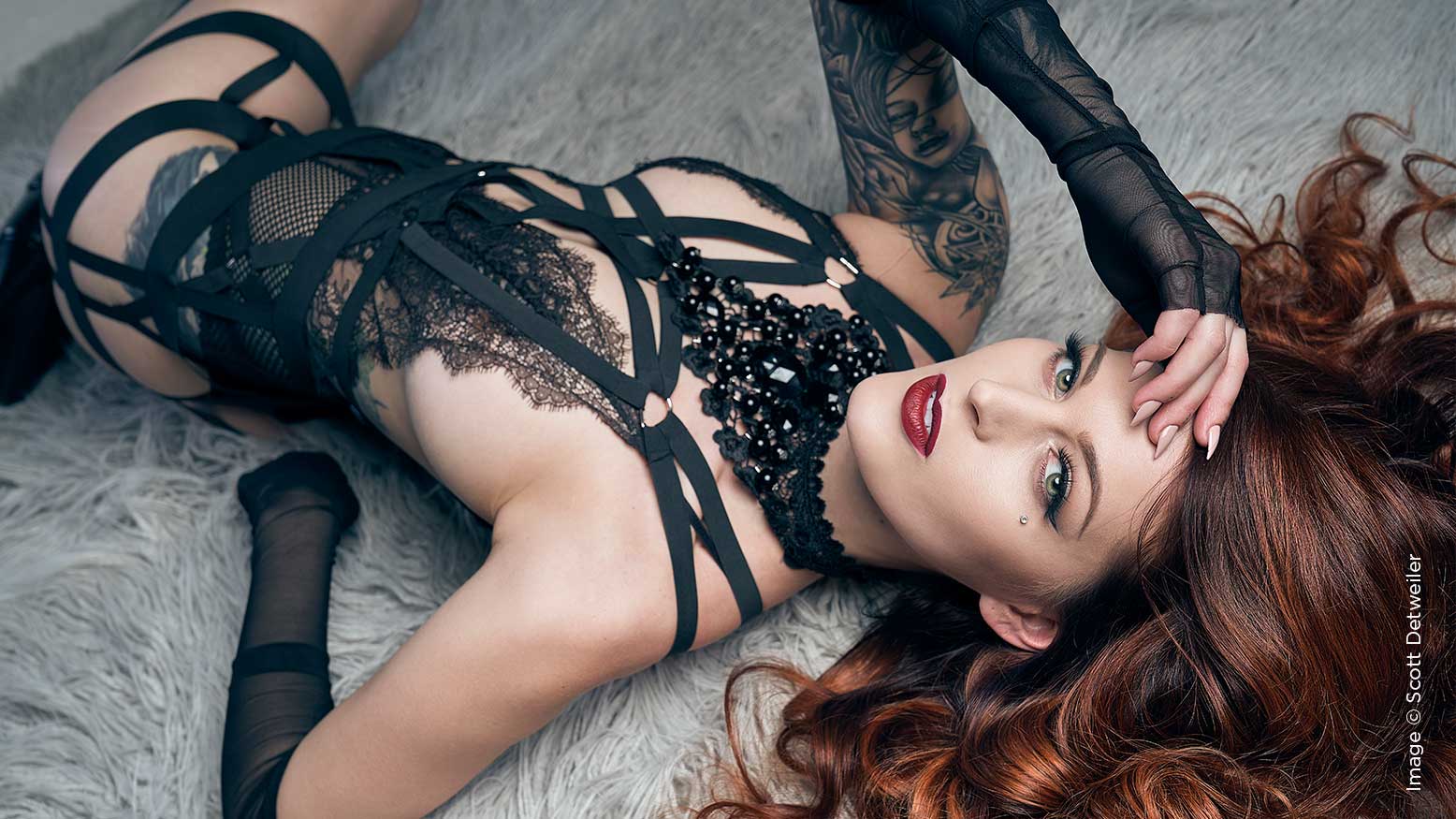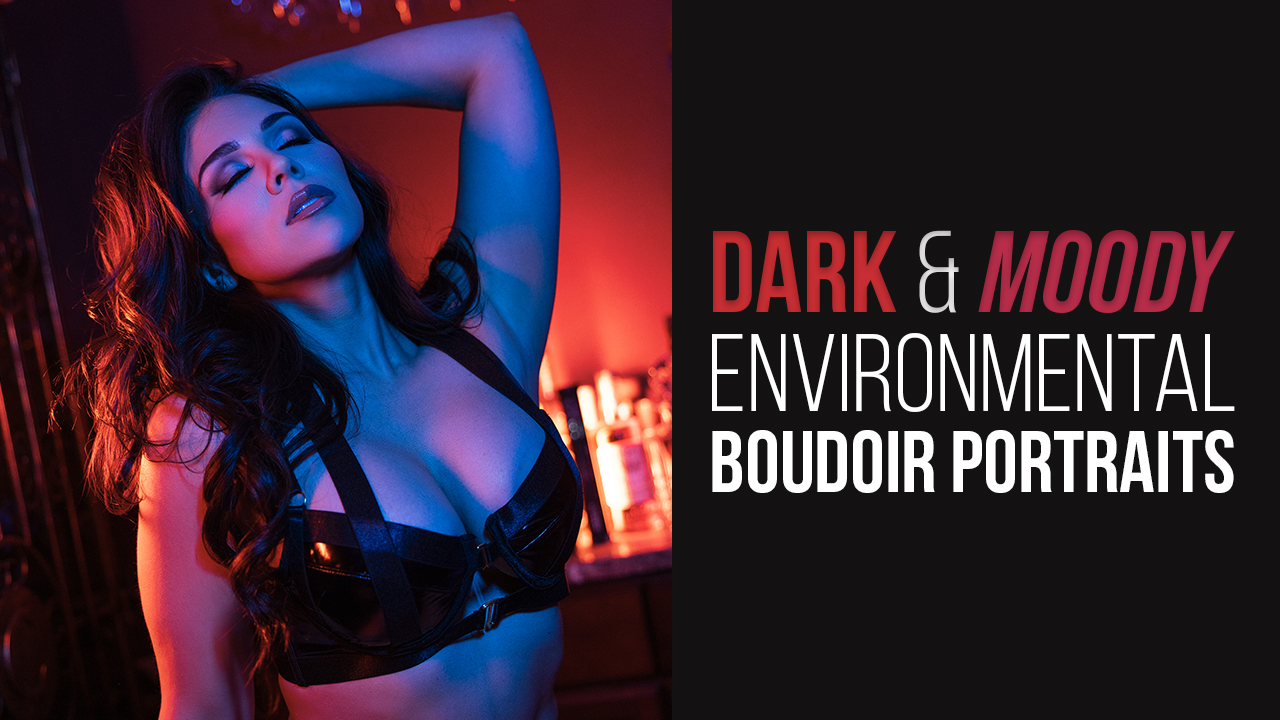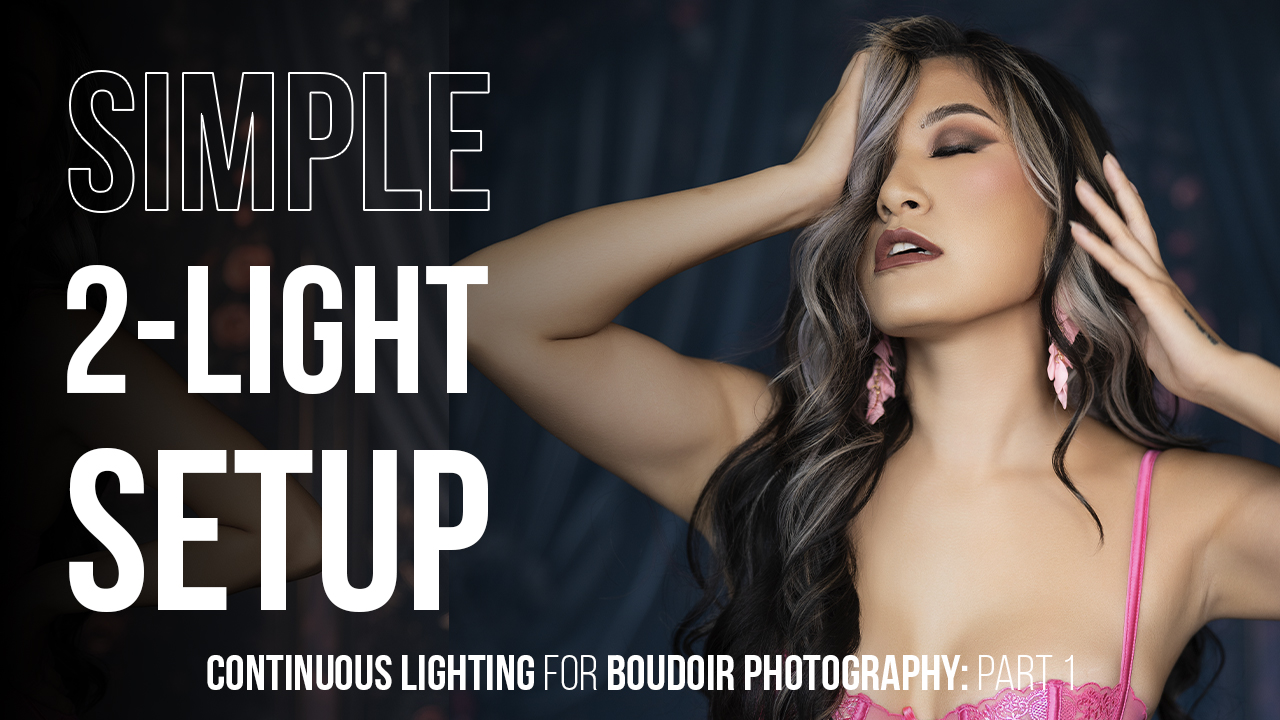Getting Started In Boudoir with Scott Detweiler
So, you would like to branch out into the boudoir market and are wondering how to get started? Here are some tips and observations from what I have learned over the years that might help you achieve your goal. In many ways, I had to unlearn some things in order to shoot intimate images that clients enjoyed, and I wanted to share a few of those with you here.
Satisfying to Shoot
Unlike with most types of photography, it is incredible to behold as you watch a woman gain self-confidence and leave the studio with her head held high. Boudoir, when done correctly, is empowering, more so than most other types of photography I have shot. Sure, you can get that feeling with some different genres, but in my opinion, it is most noticeable here. I am also a firm believer in not wrecking the mood by dealing with money at the end of a session. All of the ugly business stuff is handled days before the session—unless you are doing same-day in-person-sales, I am not a fan of talking business. Just let her leave the studio feeling like a queen so she can go tell all of her friends about her fantastic experience.
Simple to Retouch
Unlike most of the content that I seek to create, I find boudoir is probably the easiest to retouch. After all, most professional photographers already know how to retouch skin (or at least know who to call to get it done correctly). So, aside from skin, there isn’t really much in the way of the artistic process that needs to be done to make a great image. Sure, there are exceptions, and products like hand-painted canvases do have a place in this industry, but in general, once you can handle the skin retouching, the rest is pretty much done in-camera.
Client Experience Is Key
I have heard from a few wedding photographers that the experience of the event is actually more important than the images. While I initially thought this was poor advice, I have since seen it in action. The experience of the client is something that does more for them than the photos, at least initially. Now, don’t get me wrong—the images can’t be a steaming pile of portraiture. You still have to produce quality work. However, the experience is something that should not be minimized! I feel an equal balance is ideal here, so I no longer think that marvelous photos are enough on their own. I know many profitable photographers with excellent reputations who don’t focus on the imagery as much as they focus on the client experience, and this produces great results for their business. Most of them will tell you they are not the greatest photographers, but they are better than average. Now, if you can produce both fantastic client experiences and astounding imagery, then you should be at the top of the food chain (and the price point chain). Boudoir and weddings are similar in this respect—don’t just focus on the images, but rather balance them with the client experience. Especially if you are just starting out and are not super strong with lighting and posing, make up for it with the experience where you can. Wine and grapes or cheese while hair and makeup are being done, and other little touches to make them feel like queens for a day, will go a long way to winning their repeat business.
Harder to Light
Lighting and posing are probably the two biggest challenges in this genre. Usually, those new to photography tend to use as much natural light as possible, and there is absolutely nothing wrong with that. Light passing through soft sheers or creating interesting shadows across the scene can be incredibly lovely. However, lighting the human form in a flattering way is probably a few hundred pages of learning and experience. Each body type has a flattering pose and ideal way to light it, and this combination is really where most of the challenge will lie. The best method to get past this is practice as well as reading and taking classes. This is not a quick learning curve, it is one that will take many sessions to discover and years to master. So, practice as much as you can, and experiment with different lighting and posing combinations. Of course, things get a bit easier when you are not a slave to the sun and can take clients anytime you want.
Pose Variety
One of the hardest parts of boudoir in my mind is the art of posing. Some of the best advice I have received in this area comes from the fantastic Jennifer Rozenbaum. She has the client transition from pose to pose using a flow, which she often jokingly refers to as her “rotisserie chicken method.” By doing this, she has removed the “hmm, what should I do now” creative block that can happen when you are in the middle of a session. You can create your own flow by either piecing together your favorite poses or just starting in a simple sitting position and moving to the next primary pose. The obvious goal is to get as many unique and sellable images as possible from each individual pose. I also like to work on both the short and broad sides of the light, so I can get everything from dark and moody to bright, yet flattering.
Cropping Is Subjective
One of the fundamental things I had to unlearn was how to crop boudoir. We all have learned that it is a poor choice to crop below a major joint or other places where cropping is just considered bad practice. However, in boudoir, I feel that many of those common-sense rules no longer apply (e.g., we all know she has an elbow, so I am just gonna go ahead and chop that off.) I have made some images that feature details or positions of the pose I love while cropping like a mad man. I would say that you need to have an open mind here, and crop as necessary to create a great piece of art. Don’t try to apply conventional portrait cropping if you feel it is cramping your style and creativity. If the client looks fabulous, then you have done it correctly.
Find a Muse
Probably the most significant restraint to getting into the boudoir market is a portfolio. Now, most people will try to reach out to those pretty ladies they think would be fun to shoot and might really do well on social media. However, also consider your target market. If you feel you can better connect with a different age range or perhaps another level of fitness, I think you will find that you attract the type of client you choose to feature. Once you have your market figured out, do a model call and see if you can build out a portfolio that looks like the clientele you wish to attract. People buy what they can relate to, so keep that in mind as you choose your muses.
Avoid Nudes Initially
Another area that comes up fairly often is that of artistic nudes. Until you have a solid understanding and confidence with your posing and lighting, I would tell you to keep away from nudes for a while. I also find this to be a polarizing topic with potential clients, and not offering them is often considered a positive with new clients looking for a photographer they can trust. Nudes can often put a damper on the fantastic mood we are trying to create, especially if they are awkward, and the images on the back of the camera are not flattering. I am a big fan of showing the client the back of the camera when I capture a fantastic shot. This is a huge confidence boost and can really kick more life into a session. Just like my advice above, find someone who trusts you, and schedule some practice sessions. Even if they are only for practice, when you do this correctly, you will see them really take on a new level of confidence. I also find that nudes can be something where you let your artistic spirit run wild, especially with things like bodyscapes. We often spray water and glycerin on the skin to give it a wet look, and sometimes we go way overboard there and play with making rivulets in the water with the fingernails. There’s lots of creative fun to be had here when you are comfortable with the lighting and posing aspects required.
Work the Details
Another aspect of these types of sessions that I think is often underserved is the capturing of details. Those cute bows on the sides of the panties or the lace across the top of the bra cup can make for some stunning macro work, which can be perfect for a book background or even wall art. When taking the time to capture a great pose, take a moment and see if some details can also be picked up for later use. These have been great additions to clients’ sets, and I feel they are often overlooked in favor of shooting the entire body.
Styling and Sets
Even an average photographer can look like a rock star with a great set and amazing styling. So, if you are better than average, these things can elevate you to the level of imagery that scores well in print competitions and sells at a level to justify that expensive yacht you keep badgering your spouse about. Having something beyond what is normal and expected for sets and styling is also going to turn heads and bring in clients who are seeking something beyond a typical Motel 6 type of setting. Not that there is anything wrong with renting a room to photograph clients, but perhaps pre-book a few and justify a nice bed and breakfast or amazing suite at some posh place. These offerings pay for themselves and also pull you away from the pack of people who might be on equal footing with you photography-wise. I also find this level of the product tends to attract clients who really appreciate fine photography as opposed to those seeking a bargain. Focusing on the set, styling, and other details is much more critical than the post-production. The more fantastic the setting and styling, the more you should be able to charge, and the more unique your offering becomes.
ShutterFest frequently offers several formal and informal boudoir sessions for students during the event. I would make it a point to attend a few of these and ask a lot of questions.






